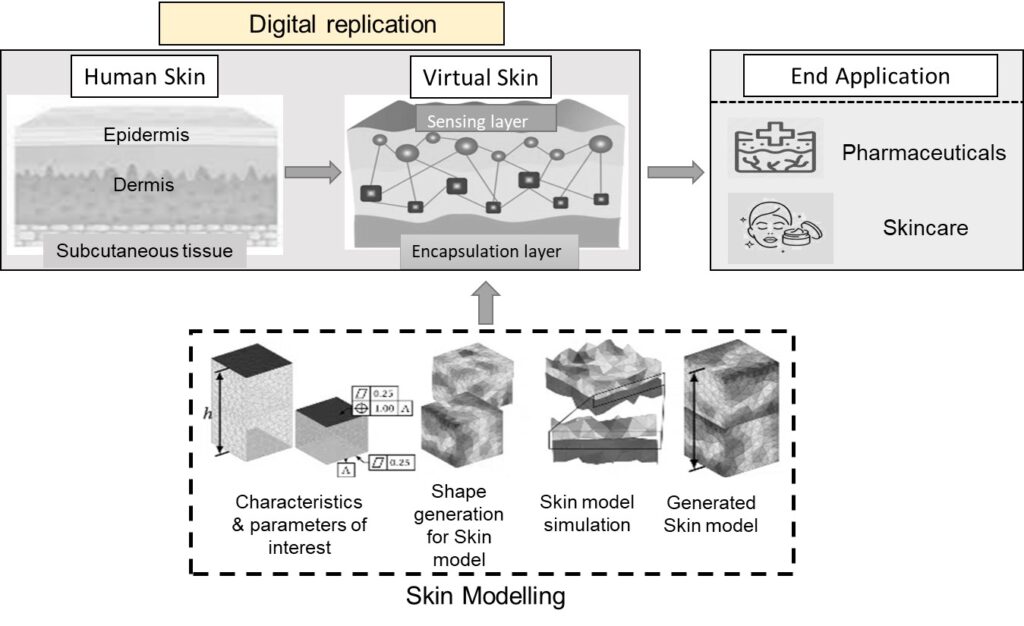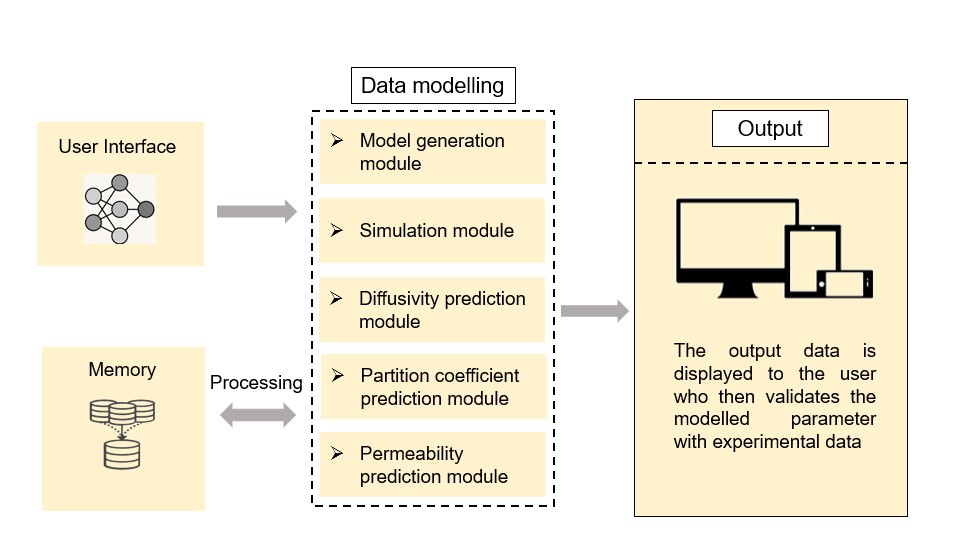Digital Twin offers various opportunities in various domains, from the conceived phase of designing to end-to-end manufacturing. Its healthcare applications have increased since the first Living Heart Project (LHP) launched in 2014. Digital skin twins are virtual replicas of a person’s skin. The use of Digital skin twins in pharmaceutical drug testing and skin care has become increasingly popular as they offer more controlled, affordable, and ethical testing in line with FDA modernization effect 2.0. This article will delve into how digital skin twins are created, their use cases, recent developments, and the challenges ahead.
Introduction: Understanding Digital Skin Twin
Digital skin twins are digital representations of an individual’s skin created using advanced computational algorithms and molecular dynamics simulations. These digital twins or replicas mimic the skin’s physiological and biological levels properties. The twins detail the modeled structure, function, and response toward various stimuli.
Why Digital skin twins are needed:
- In-vitro prediction of uptake of chemicals via the skin is essential for transdermal-based drug delivery and topical application of skin cosmetics. The studies involve using 2D skin models/ artificial skin models that poorly resemble skin vasculature, and huge anatomical differences exist between animal models and human skin.
- EU regulations are against using animal or animal-derived substances to develop and test cosmetic and pharmaceutical ingredients. As a result, alternative skin models are developed that are very costly, and all these factors enhance the costs borne by companies during clinical trials.
Digital skin twins solve these concerns by developing a model that accurately resembles human skin, reducing dependency on animals and other 2D-skin models. Simultaneously, they can predict outcomes while interacting with lead drug candidates for pharmaceutical and topical applications.

Framework for Digital Skin Twin
Conceptualising Digital twins is a challenge of its own. The amount of calculations while addressing various variables is very complex.
Creating a Digital Skin Twin:
- Data collection: The human skin is a complex organ with multiple layers, including the outer layer epidermis, which is itself made of four layers. To create a model, data points are collected for different parameters, such as the number of cells present, the thickness of the layer, and porosity. With the help of various 3D diagnostic imaging, this data can be collected for skin types and conditions.
- Structure library: A structured library is created with the help of data points. It includes information about skin lipids, biological molecules, proteins, drugs, polymers, nanoparticles, water, hydrophilic and hydrophobic molecules, and solvents.
- Model generation module: It creates a model based on the information generated from the structure library. The molecular model contains bonded and non-bonded parameters to describe the interaction between the biological molecules
- Simulation module: It performs molecule dynamics simulation of the target drug using the models.
- Diffusivity prediction module: This module is used to predict the diffusivity of target molecules.
- Partition coefficient prediction module: This module is used to predict the partition coefficient of molecules. Skin composition varies from water to bilayer phases.
- Permeability prediction module: Predicting permeability is one of the most important parameters.
These systemic components are integrated within the processor, and a graphic user interface is provided for the user.

Recent Advancements
Here are some of the recent advancements
- TCS: TCS has developed a digital model for stratum corneum. The model is based on multiscale modeling and VR. During in-vivo and in-vitro testing, this digital skin was observed to function flawlessly with actual skin after comprehensive validation by TCS COINTM partners. Also, the platform can potentially improve current development procedures through molecular and computational fluid dynamics simulations.
- Dassault Systems: Dassault Systems has created a multiscale model of skin that can precisely predict the penetration of substances across skin layers. In collaboration with Urgo Medical, Dassault has launched GENESIS to develop artificial skin. The company has developed multiple digital twins for the heart and brain. It is at the forefront of creating digital twins for healthcare research. Researchers have utilized its COSMOperm model while developing digital skin models.
- Empa research: Empa research is developing new skin Digital twins for addressing drug delivery via transdermal bandage. The focus is to merge non-invasive drug administration via transdermal bandage with the help of Digital skin twin, simultaneously controlling and predicting the course of treatment using real-time modeling. Additionally, the Novartis Research Foundation funds the project.
Challenges
The Digital twins for skin are still in the early innovation stage. Companies are still evaluating certain models with which to work. This is evident with no solution being marketed as tested on digital skin twins.
A few potential challenges exist:
- Data acquisition: Gathering the right data addressing multilevel skin parameters such as cellular constituents and the layers within. This is because skin complexity, by nature, contains multiple layers with varied cellular and tissue compositions from the epidermis to the dermis.
- Creating Models: Gathering the right data while addressing multilevel interactions within the cells. The challenge is developing the initial structures of the bilayers that permeate at different constrained positions.
- Computational Requirements and Scaling up: Simulation requires high computation power and maintenance. Incorporating these into scalable solutions or manufacturing is still a big challenge.
Conclusion
Digital skin twin technology has enormous potential to build future clinical trial systems digitally in multiple ways. The article explored how Digital skin twins are implemented while addressing multiple parameters, along with recent advancements and associated challenges. Limitations exist while developing suitable skin models. Despite these limitations, Digital twins for skin are still valuable for cost-effective and cruelty-free solutions. Strategic initiatives such as the formation of the Digital Twin Consortium drive the awareness, adoption, interoperability, and development of Digital twin technology. Moreover, the consortium is dedicated to developing Digital twins across industries through a collaborative partnership with industry, academia, and government experts. With increased industrial interest, digital skin twins are expected to revolutionize and pave the way for personalized skin treatments.